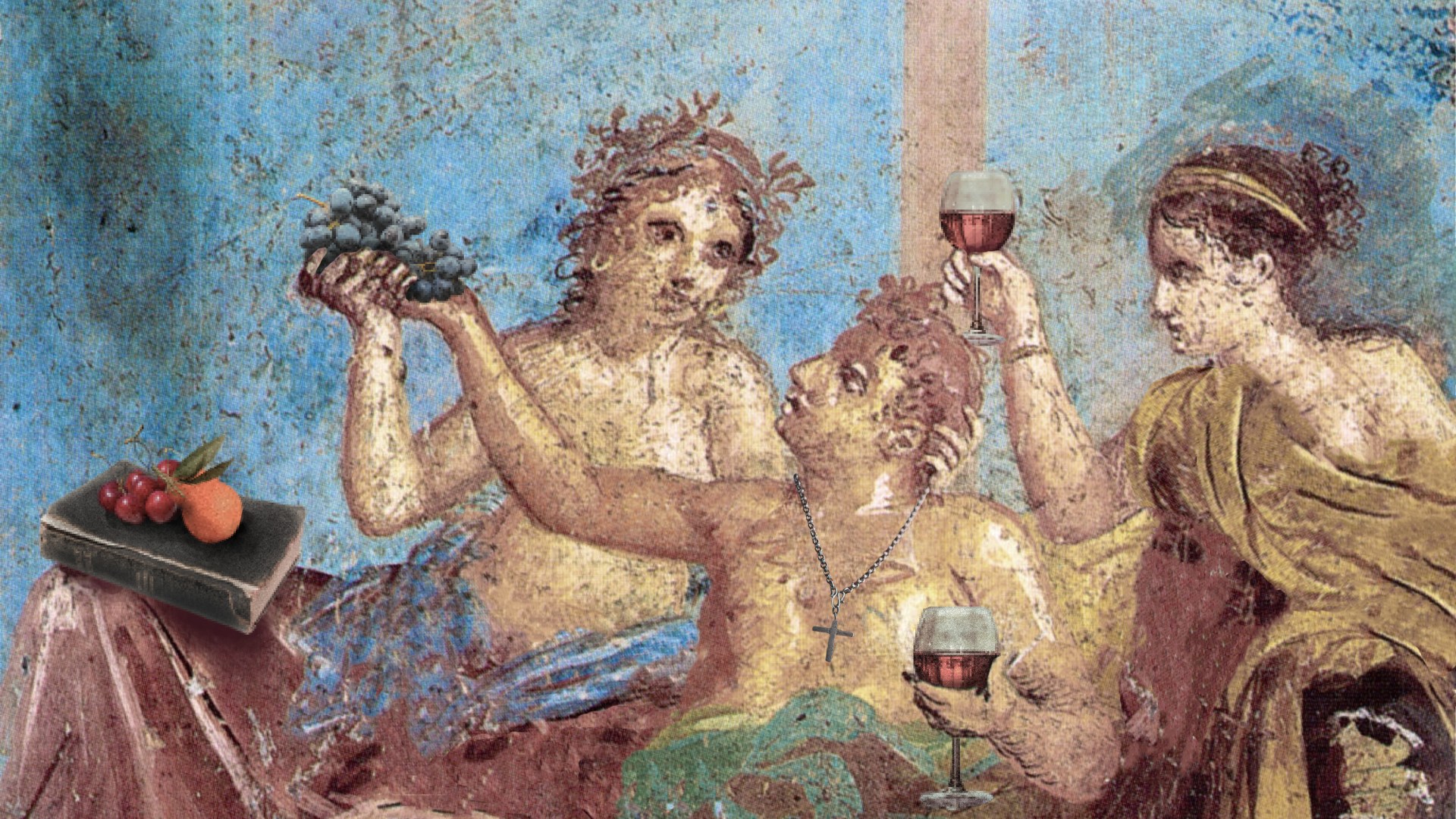Martyrdom lurking around every corner. Christians fervent in prayer morning, noon, and night. Bold declarations of “Christ is Lord” in Roman arenas.
Cultural Christians in the Early Church: A Historical and Practical Introduction to Christians in the Greco-Roman World
HarperCollins
256 pages
$10.75
This describes a few Christians, at a few moments, in the first few centuries of the church. Despite popular depictions, this was not the norm for every person bearing the Christian name. In fact, the norm was less heroic than we might realize.
In Cultural Christians in the Early Church: A Historical and Practical Introduction to Christians in the Greco-Roman World, historian Nadya Williams proposes that many Christians in the church’s first five centuries may have been more closely aligned with their surrounding culture than with Christ. This is not to deny the authenticity of their faith, only to say that Christians have always been tempted to adapt to cultural conventions.
This more nuanced and historically consistent portrait erodes notions of “golden-era Christianity.” Like a microscope revealing cancerous cells, Williams shows readers how Christians are too often infected by the culture around us rather than influenced by Christ in us. From Christian nationalism to love of wealth to Christian “celebrity culture,” there is nothing new under the sun when it comes to how Christians have acclimated to cultural norms.
Straddling fences
Beginning in the New Testament, Williams shows how some Christians took cultural priorities more seriously than biblical ones. The standout case in the Book of Acts is the episode of Ananias and Sapphira, affectionally dubbed by Williams as the “first cultural Christians.”
This couple, seeing the sacrificial generosity of early believers, sought to make a similar statement, albeit with different motivations than those of their counterparts. Where other believers were driven by ideals of sacrificial giving based on the gospel, Ananias and Sapphira pursued a form of notoriety based on Roman notions of benefaction. Wealthy Romans expected to gain something in return for their gifts.
We often act with a similar mindset. The issue for this culturally Christian couple was the manipulative nature of their gift. Giving the church a portion of the proceeds from a land sale would have been laudable; presenting themselves in the same sacrificial light as others was not. Christians ought to give sacrificially, but never in a way that feigns sacrifice for the sake of accumulating power.
Williams proceeds to shed much-needed historical wisdom on issues related to consuming food and wine (chapter 2), as well as the realities of sexual relations in the Greco-Roman world and their impact on the church (chapter 3). The first Christians, it appears, carried with them some of their Roman baggage, including ritual drunkenness and pagan worship practices. Paul’s exhortations to the church, in 1 Corinthians and elsewhere, make it clear that Christians were attempting to straddle the fence when it came to food and drink, at times looking more Roman than Christian.
Regarding sexuality, of course, nothing could be more countercultural than the Christian sexual ethic. Christians were to be faithful to their spouses or remain celibate. In contrast, Roman men could do almost anything they desired sexually without penalty. In prominent cities such as Rome, Corinth, and Ephesus, cultic prostitution was the norm, not to mention that slaves were seen as property to use sexually as desired. Some may say that we live today in a sexualized culture (which is surely true), but, in many ways, ancient Rome makes the modern West look like a PG-rated cartoon.
Williams then turns the historical page to consider post–New Testament Christians and the cultural sins present within the first few centuries. An interesting case involves Pliny the Younger, a Roman governor who grilled several Christians to better understand the supposed threat they presented in his region. Upon interrogation, it seems that some Christians were quick to reassure Pliny by renouncing their faith. Others persisted, however, leading Pliny to seek wisdom from Emperor Trajan on how to proceed.
The famous exchange between Pliny and Trajan represents a key non-Christian historical source on the nature of Christianity in the second century, attesting to the reality that some were leaving the church. Stories of renunciation would play out in the following decades during various times of Christian persecution, and later leaders such as Cyprian of Carthage would speak to how “lapsed” Christians ought to be reintegrated into the church.
This historical episode lends itself to helpful insights about “exvangelicalism” and related movements. How might Christians today address those who are leaving the church? Is the problem the faith, the clergy, or something else? To what degree do modern conventions such as social media play a factor? It’s worth considering recent work on the rise of the religiously unaffiliated “nones” and “nonverts” alongside stories of their forerunners in the early church era.
According to Williams, Christians in the Constantinian and post-Constantinian eras did not fare much better regarding cultural sins. Scholars of late antiquity are not surprised by violence between Christian groups or even by the power and manipulation used to sway ecclesial decisions. Modern Christians, though, ought to be shocked and reminded that such postures are contrary to Christian virtue.
Often, what seemed like disagreements over theology and practice may have been more cultural than theological. Advocating violence or manipulation as a “means to an end” is antithetical to Christian practice—or it ought to be, as Williams emphasizes. She notes, “Sometimes divisions are less about good theology and more about appearances. And those kinds of divisions should worry and convict us.” To this I can only add, amen!
I was particularly encouraged by the connections Williams draws between the church in the fourth and fifth centuries and the dynamics of Christian nationalism and celebrity culture today. Many have looked to Augustine’s City of God as a critique of Roman culture and its parallels today, but Williams uses Augustine like a scalpel to delicately remove a cancerous tumor. Augustine minces no words regarding the failures of Rome and the absurdity of Roman religion. In sum, placing one’s ultimate hope in an earthly kingdom is foolhardy at best. While heavenly citizens care about the welfare of the earthly kingdom, they are realistic about its prospects and longevity.
Most surprising in this book is the way Williams uses the early monastic movement to draw conclusions about the dangers of Christian celebrities. As numerous individuals fled to the deserts of Egypt and the surrounding region in the late fourth century, their spiritual fame and status garnered much attention. As Williams shows, these spiritual tours of desert monks were not unlike pagan shrine visitations.
Desert monks also represent object lessons for us today. Many today criticize the gathered church for stifling individualized spiritual experience. But whatever spiritual insights we gain from the early monastics, they must be used to serve God’s people.
No golden eras
Cultural Christians in the Early Church gives readers a fantastic example of how we ought to learn from this pivotal period in Christian history. The book is not a detailed introduction to early Christianity. It is, however, a powerful statement regarding human nature and the perennial challenge of living according to Christ. Christian doctrine speaks to the issues of our culture, whether in the first century or the 21st.
The book and its outlook are not pessimistic but realistic. Williams brings to it her knowledge of late antiquity, her dedication as a disciple of Christ, and her observations on modern evangelicalism. There were moments in the book when I wished Williams, rather than ending most chapters with various connections to modern evangelical life and thought, would let readers draw their own conclusions. Overall, however, this work levels the playing field for Christians today. Williams does not excuse these “cultural sins,” but instead does the delicate historical work of helping readers understand how we are just as prone to them as our forebears.
Rather than idolizing the early church, perhaps we should learn some sober lessons and apply them to our experience today. Williams’s work is far from an abstract exercise in social history; it presents a “usable history” of the best sort.
Recognizing our cultural sins ought to bring us back to the upside-down kingdom ethics of Jesus. Truly his kingdom is not of this world. There is no golden era of the church in history; only the one to come in eternity.
Coleman Ford is assistant professor of humanities at Southwestern Baptist Theological Seminary. He is the co-founder of the Center for Ancient Christian Studies and serves as a fellow of the Center for Pastor Theologians. He is the author of Formed in His Image: A Guide to Christian Formation.










